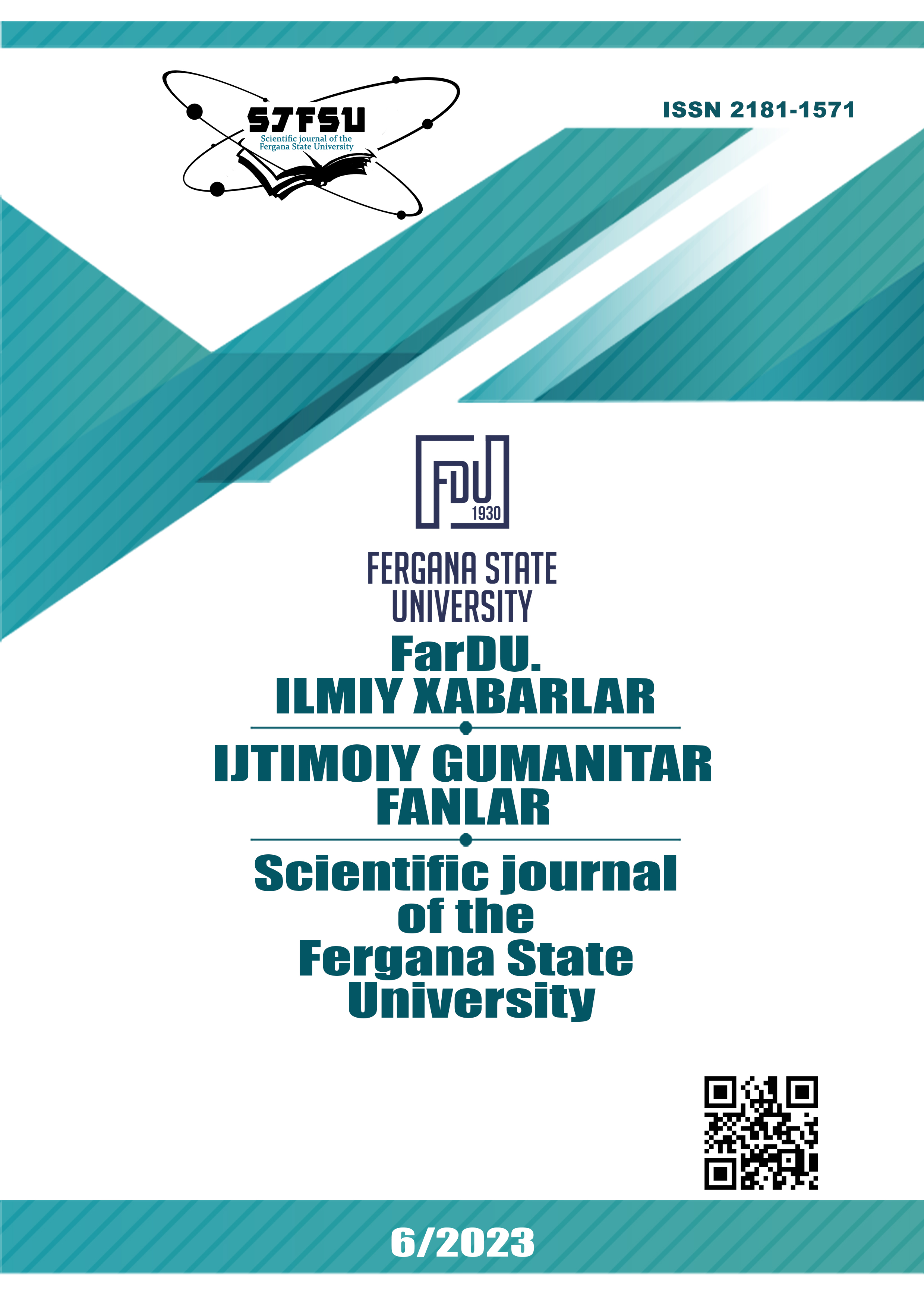ISLAMIC REFORM (MODERNISM): RELIGIOUS-PHILOSOPHICAL AND POLITICAL ASPECTS
Keywords:
religion, worldview, idea, principle, “Nahda”, cultural upsurge, ideology, social thinking, appearance, cultural development.Abstract
The article describes the development of pan-Arab culture and political changes in the Arab world since the mid-19th century, called “Nahda” (renaissance). The creation of new Arabic literature, the development of education and the development of new ideological guidelines were carried out, “Nahda” was interpreted as a comprehensive development, the creators of “Nahda” considered the main task to restore the economic, political and cultural power of the Arabs, and also tried to synthesize elements of Western and Eastern culture.
References
Abu Lays as-Samarqandiy. Tanbehul gʻofilin. Dilmurod Qoʻshoqov tarjimasi. T.: Movarounnahr, 2000.
Azimov A. Islom va hozirgi zamon. T., 1992.
Azimov A. Islom va hozirgi zamon: maʼruzalar matni. T.: ToshDSHI, 2000.
Al-Buxoriy, Abu Abdulloh Muhammad ibn Ismoil. Al-Jomi as-sahih (ishonarli toʻplam). 4 jildli. T.: Qomuslar bosh tahririyati, 1991-1999.
Joʻzjoniy A;.Sh. Islom huquqshunosligi, hanafiy mazhabi va Oʻrta Osiyo faqihlari. “Toshkent islom uneversiteti nashriyoti”. 2002 yil.
Mansur A., Ibrohimov N.I., Toʻxliyev N., Hasanov A. Ilmu maʼrifat nuri (Saylanma hadislar). T.: Oʻzbekiston milliy ensiklopediyasi, 1998.
Moʻminov A.Q. Dinshunoslik asoslarini oʻqitish va oʻrganishning yagona konsepsiyasi. T.: Toshkent davlat sharqshunoslik instituti, 1999.
Qurʼoni karim maʼnolarining tarjimasi. Tarjima va izohlar muallifi Abdulaziz Mansur. T.: «Toshkent islom universiteti» nashriyoti, 2001.
Downloads
Published
Issue
Section
License
Copyright (c) 2024 Scientific journal of the Fergana State University

This work is licensed under a Creative Commons Attribution-NonCommercial-NoDerivatives 4.0 International License.
Most read articles by the same author(s)
- , EXISTENTIALISM - PHILOSOPHY OF LIFE , Scientific journal of the Fergana State University: No. 2 (2024): Scientific journal of the Fergana State University (Social humanities sciences)
- , , EMERGENCE OF DIALECTIC AND ITS EXAMPLES , Scientific journal of the Fergana State University: No. 1 (2025): FarDU ilmiy xabarlari jurnali (IJTIMOIY FANLAR)

